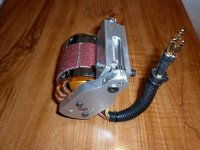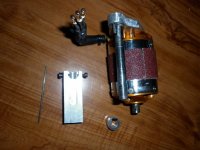adrian_sm
1 MW
Update: Dual-personality
I think my drive has a dual personality, which is causing me and others confusion.
It started with personality 1, and is now fighting with personality 2.
Personality 1) The Original DIY
- light weight friction drive <1kg
- good performance >1kw
- cheap parts, see how cheap works
- able to be built with minimal tools, minimal hurdle for people to DIY
- simple
- market, ES type enthusiast
Personality 2) Commercial product
- full friction drive kit
- light weight friction drive, want the bike to still be a bike
- "legal" performance, able to be limited to local legal limits
- competitive total package cost
- initial small batch production to test market
- robust and idiot proof, self protecting
- market, anyone that doesn't think it is cheating
The problem is that these are actually quite different products, and will require different solutions. But I am trying to walk some middle ground ... and obviously failing.
For Personality 1). the mechanicals work, make some yourself and give it a go. But you will need to sort out that electrical stuff for yourself at the moment. There are a few options that should work, not elegant but work, depending on budget vs skill.
For Personality 2)........... well let's just wait and see once I make a few, get more road time, and get some feedback.
Sorry for the confusion people. Just getting ahead of myself.
- Adrian
I think my drive has a dual personality, which is causing me and others confusion.
It started with personality 1, and is now fighting with personality 2.
Personality 1) The Original DIY
- light weight friction drive <1kg
- good performance >1kw
- cheap parts, see how cheap works
- able to be built with minimal tools, minimal hurdle for people to DIY
- simple
- market, ES type enthusiast
Personality 2) Commercial product
- full friction drive kit
- light weight friction drive, want the bike to still be a bike
- "legal" performance, able to be limited to local legal limits
- competitive total package cost
- initial small batch production to test market
- robust and idiot proof, self protecting
- market, anyone that doesn't think it is cheating
The problem is that these are actually quite different products, and will require different solutions. But I am trying to walk some middle ground ... and obviously failing.
For Personality 1). the mechanicals work, make some yourself and give it a go. But you will need to sort out that electrical stuff for yourself at the moment. There are a few options that should work, not elegant but work, depending on budget vs skill.
For Personality 2)........... well let's just wait and see once I make a few, get more road time, and get some feedback.
Sorry for the confusion people. Just getting ahead of myself.
- Adrian




